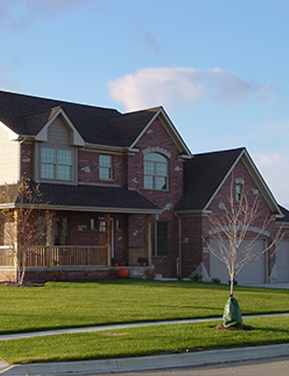-
 09
09MAY, 09
Universal Design: A Disguise for Aging in Place
Originally seen on the Home for Life Advantage, Inc. BlogWhat is Aging in Place?
“Aging in Place.” What does that mean? If you’re reading this and asking the same question, you're not alone. Most homeowners do not understand this phrase, but they are taking actions that fall under its definition.
Aging in place is defined by the U.S. Center for Disease Control and Prevention as “the ability to live in one’s own home and community safely, independently, and comfortably, regardless of age, income or ability level.” In short, you are making modifications to your home so that you can continue living there, safely and comfortably.
Many folks take it upon themselves to make changes around the home to create an easier life, no matter what age they are. Some of these changes include automation, like Google Home or the Amazon Echo; pullout cabinets in the kitchen; self-cleaning gutters; fixing the sidewalk to remove cracks and other tripping hazards.
Adjustments like these aren’t necessarily done by seniors – they are done by new homeowners, second-time homeowners and lifetime homeowners. Why? Because that’s less time you’re fighting the tumbling avalanche of plastic containers coming from your cupboard; less time cleaning the leaf-filled gutters; less time in the ER because that nagging crack gave you a worm’s view of the sidewalk.
First Steps to a Universal Design Home
Modifications to make life easier and safer just make sense. Before jumping into a full home renovation, consider your present needs and think of what you may need in the future. Universal Design has transformed the home design industry by creating ideas that work for every point in life. Rocker switches, lever door handles, redundant lighting, non-slip floors, walk-in showers, automation throughout the home, varied-height counter tops, thicker walls for future installation of grab bars, among others, are all first steps to building an aging-in-place home.
Start the planning process from the ground and work your way up. There’s no specific timeline for what you’ll need as you age. It’s important to create an adaptable home, one that’s able to age with you. Home Advisor created a visual for the planning process with their Phase Pyramid. As you age, your needs will change. Starting with the basics like general maintenance will give you a solid base to work from. From there, you can consider using your smartphone to program lighting, temperature and security rather than looking at hard-to-read buttons and dials.
By making gradual modifications, your home will age with you. The next steps for you may be adding a comfort-height toilet, grab bars in the bathroom or a walk-in shower. Often, the bathroom is the best place to start with more of the major renovations for aging in place. According to the National Institute on Aging, 80% of falls happen in the bathroom.
Begin with the Bathroom
Include an adaptable shower in your home like this one. The glass doors were replaced with a curtain for ease of access. Grab bars were installed for help with balance and mobility.
Wayne Slavitt, CEO of Mobül, a retail mobility provider, recently featured in an HME Business article where he explained the low commitment and cost of updating a bathroom to age in place. “It’s… a lower dollar value; bath safety is not an expensive way for customers to dip their toes into this,” he said. “If you are concerned about safety in the home, then getting a shower chair is a fairly benign product – it’s not having to make a big commitment dollar wise or emotionally. And it’s such an easy entry-level way of saying, ‘You know what? I’ll start here and I’ll up to the next products over time.’”
Throughout this process, however, style can easily be paired with function. Universal Design considers style alongside adaptable spaces. It’s as seamless as you want it to be. If you’re renovating your bathroom, consider a walk-in shower with doors that can be removed. Things change in the future, and it might be helpful to have a barrier-free shower. This way, you currently have a stylish shower – in the future, you have an accessible shower.
From there, you can continue adding items based on your needs and move throughout the house, replacing or remodeling step by step.
Return on Investment
If you're concerned about how modifications will affect the value of your home, there is no need to worry. Home modifications focused on universal design will only help increase your home's value. Certain aging-in-place modifications that may not appeal to a wide audience, like a wheelchair ramp, may be removed. Many garage ramps are easily removed once they are no longer necessary. On the other hand, renovating a kitchen or bathroom using Universal Design will increase its appeal to a general audience. It's adaptable to those with a disability, mobility issues or just someone looking for a home to age in place.
According to Home Advisor, two rooms that will give you an ROI you want are the kitchen and bathroom. Outdated bathrooms with old amenities and fixtures will typically turn off buyers. Kitchens tell the same tale. Even with a minor kitchen remodel, you'll get 80% of what you invested back. People tend to want new, stylish, energy-efficient appliances alongside refaced cabinets, new counter tops, and sink area. Combine all of this with Universal Design and you'll have a comfortable, beautiful home that will sell well in the future.
No Matter Your Age, Plan Ahead
Creating an aging-in-place home isn’t just for seniors. It’s for all ages of homeowners who want to prepare for the future. By using Universal Design, you can seamlessly weave adaptable function into your style. Planning for the future is important for everyone – from Millennials to Generation X to Baby Boomers to Seniors. Design a home that will age in place with you.









